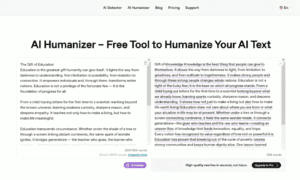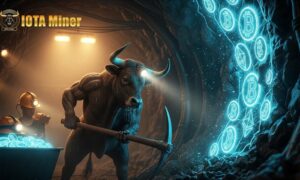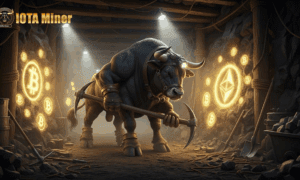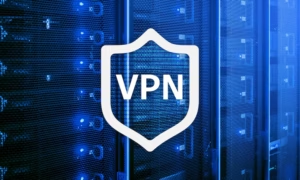Data science is booming right now, and you don’t need a fancy degree to get in on the action. It’s not too late to learn how to become a data scientist in 2025. Whether you’re looking to switch careers or just getting started, here’s how you can actively chase down your dream job in data science.
Master the Basics
First up, you’ve got to get a handle on the fundamentals. Statistics will help you understand data distributions, hypothesis testing, and how to make sense of data variability. Probability is crucial for machine learning algorithms, especially when dealing with predictions and models that estimate likelihoods. Linear algebra isn’t just for mathematicians; it’s vital for understanding different algorithms. Understand concepts like Principal Component Analysis (PCA), which reduces the dimensionality of data and helps with optimizing machine learning models. Furthermore, differential and integral calculus are central to machine learning algorithms. You don’t need to be a math whiz but get familiar with the fundamentals.
Next, roll up your sleeves and learn Python and R – these are the languages data scientists swear by. Python’s libraries like NumPy allow you to handle large multidimensional arrays and matrices, making it perfect for data manipulation. R, on the other hand, is renowned for its statistical capabilities, offering a rich environment for data analysis and graphical techniques. Tools like Pandas give you data structures like DataFrames to manage and analyze data efficiently. Scikit-learn is your go-to for machine learning in Python, providing accessible implementations of many algorithms. TensorFlow, developed by Google, is essential for deep learning, enabling you to build and train complex neural networks.
Sharpen Your Skills
Take control of your learning by signing up for courses on platforms like Coursera, edX, or DataCamp. These aren’t just any courses; they’re often developed by universities or industry leaders, offering real-world case studies alongside theoretical knowledge. Apply what you learn through projects. Maybe you start by predicting housing prices with a dataset from Kaggle or analyze Twitter sentiment for stock market predictions.
Don’t overlook contributing to open-source projects. This isn’t just about learning; it’s about getting your code reviewed by others, understanding different coding styles, and sometimes, even leading a project. Platforms like GitHub are filled with data science projects where you can contribute. This engagement can lead to mentorship opportunities or even job offers as you prove your capabilities in a live, collaborative setting.
Showcase Your Work
Building a portfolio isn’t just about collecting your work. Narrate your journey as a data scientist. Use GitHub not just to store code but to tell a story. Each project should have a README that explains what the project does, how to use it, and what you learned. This practice shows potential employers how you approach problems and learn from them. Writing blog posts or articles isn’t just content creation; it’s about thought leadership. Explain complex concepts in simple terms, share your take on industry trends, or break down how you solved a particular problem. This can attract attention from recruiters, peers, or even conference organizers looking for speakers.
Get Real-World Experience
Internships are your opportunity to apply academic knowledge in real-world scenarios. Even if it’s not explicitly a data science role, positions in related fields like data analysis or business intelligence can be stepping stones. So, start by getting familiar with different data science careers. Then, volunteer your data science skills at non-profits for community projects. You’ll build your resume and show your commitment to using data for good. Alternatively, hackathons are intense but rewarding; they’re where you can showcase your ability to work under pressure, collaborate with others, and sometimes, win prizes or job offers.
Network Like Crazy
Networking isn’t just about collecting contacts; it’s about finding opportunities. Meet industry leaders at conferences like Strata Data Conference or PyData. But also attend smaller meetups and engage in online communities where you can ask questions, demonstrate your expertise and build relationships. Start with Reddit’s r/data science or Stack Overflow. Don’t forget to update your LinkedIn profile with skills, achievements and community memberships.
Extra Tips
- Grab Certifications: Certifications from Google, IBM, or Microsoft can validate your skills in a competitive job market.
- Stay on Top of Trends: The field evolves rapidly; staying current means you could be the one introducing new methods or tools to your workplace.
- Stay Persistent: The journey might be long, but every project, every connection made, is a step toward your goal.
Your Toolkit
Here’s what you’ll need to actively pursue this path:
- Courses: Sign up on Coursera, edX, Udacity, or DataCamp for structured learning.
- Practice Platforms: Use Kaggle or DrivenData to apply your knowledge in competitions or real-world problems.
- Books: “Python for Data Analysis” by Wes McKinney is excellent for mastering data manipulation with Pandas. “Hands-On Machine Learning with Scikit-Learn, Keras & TensorFlow” by Aurélien Géron gives you a practical guide to building machine learning systems.
By actively engaging with these steps, you can carve out a career in data science, degree or no degree. It’s all about resilience, continuous learning, and showing the world what you can do with data. Remember, in data science, your skills and your portfolio speak louder than any diploma.





























